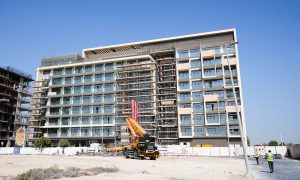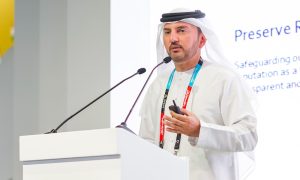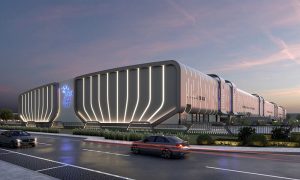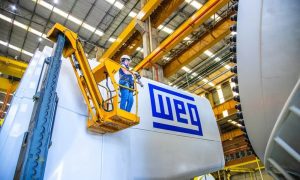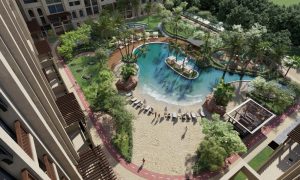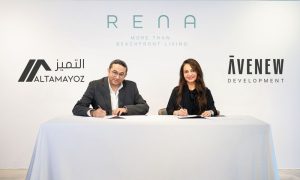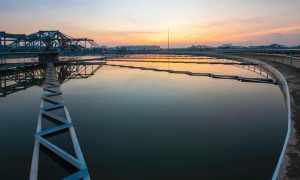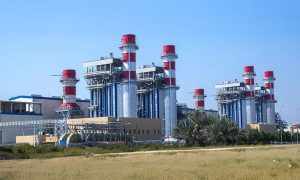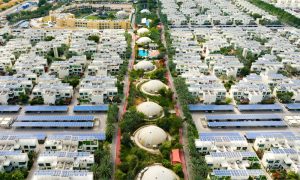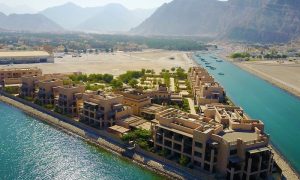Top trends in the Dubai property market
What investors need to look out for in this volatile market

Right from the start of 2015, the buzzwords in the Dubai real estate market have been ‘positivity’, ‘resurgence’ and ‘growth’. The message from developers to investors was clear: Dubai is back and ready to build again.
This sense of optimism is only natural; developers are keen to get their projects started off again, and with the effects of the crisis fading into the background, the time is right to go back to the investor well.
However, when the data is examined a little more closely, things are not as clear-cut as they seem. A report by JLL for the first quarter of 2015 found continued subdued activity in Dubai’s real estate market. While residential rents remained relatively flat, sale prices actually saw a slight decline across both apartments and villas.
Meanwhile, the retail market continued to be constrained by the slowdown in spending, which restricted overall growth levels. The report added that the delivery of more grade-A office space has limited rental growth in the office sector as well.
What this means for the real estate market is manifold. While there are clear indications of recovery, the double-digit growth between 2012 and 2013 has evolved into a more stable market that is showing signs of maturity, says Ian Albert, regional director of Colliers International. “In contrast to the highly speculative market of 2008, today the majority of transactions are for completed properties, purchased by investors and, increasingly, by end users.”
This changing marketplace is reflected in the changing nature of investment for the residential real estate market, says Harmen De Jong, partner – Development Consultancy and Research at Knight Frank. “When it comes to residential, we see a lot of supply being constructed. We’ve done quite a bit of work with developers of residential real estate communities along Mohammed Bin Zayed Road and in Meydan. The appetite we’ve seen there is good. We’re looking at average absorptions of between 50 to 150 units per month, so the appetite is high.”
“But what we’ve seen is that the demand for townhouses is higher than it is for apartments. Smaller villas are okay as well, but it’s mainly townhouses, especially for families looking for affordability. Townhouses are more efficient to build and that also means higher returns for the developer. When it comes to villas, we’ve seen that there’s mainly a demand for smaller unit types. So it’s not necessarily the big four-bedroom or five-bedroom type villas, but more the smaller unit sizes. That also has to do with some of the cooling measures introduced by the Dubai government.”
What De Jong is referring to is the introduction of the mortgage cap; first-time buyers have to pay a down payment of 25% on a property. However, if the property is worth more than $1.36 million, then investors need to pay a down payment of 35%.
“The moment you have this barrier, where if you go beyond the $1.36 million figure, then you’re going to be catering to the wealthy – the richer people, so to speak. That’s the difference, and that’s what we’ve seen, that townhouses are in higher demand,” he asserts.
This viewpoint is backed by Albert, who says Colliers has seen diminishing returns at the top end of the market. “Since the introduction of the mortgage cap and the increase in transfer fees, we have seen residential sales prices of villas in Dubai feel the most pressure, with prices remaining stable in Q2 and Q3 of 2014, rising marginally by 4% in Q4 2014 and declining by 5% in Q1 2015. This can be attributed to the overall increase in cost of buying a villa.”
In light of these facts, perhaps it’s no surprise then to see that greater attention is now being paid to the affordable housing market in Dubai. The JLL report’s overview of the city’s residential market found that the next driving force in the market is set to be end users or middle-income earners, rather than speculative buyers.
Therefore, the first quarter of 2015 saw developer and government initiatives launched to target the affordable housing sector. On the development side, Nshama launched two phases of its Town Square project – Zahra and Hayat. Meanwhile, Ian Albert says that developers like Damac and MAG have begun addressing the issue of affordable or mid-market properties in the Dubai market.
“This, however, will not have a significant impact on the current demand/supply gap that we are seeing in the market,” he warns. “In order to make any real headway in addressing the current housing gap that Dubai is facing, we would need to see another mid-market residential development of comparable size to Discovery Gardens [approximately 25,000 units].”
“Another theme that our research is highlighting is the lack of mid-market property,” Albert says. “Colliers International recently conducted a study looking at affordability levels within the housing market. The findings indicate that over 50% of Dubai households earn between AED 9,000-15,000 per month.”
“Following internationally accepted standards of what a household can afford to spend every month on accommodation, this limits rental or mortgage repayments to AED 32,500-54,000 per annum. This sizeable demographic is currently limited by not only location but also the type of product that is available to them, with often only studio or one-bedroom apartments offered in this price range.”
International affairs
An intriguing subplot to the story of Dubai’s residential market is the impact of Iran’s nuclear deal with the USA. While a conclusion still remains some distance away, the early signs remain positive, which means a long dormant investment avenue could soon be open to developers.
“Let us assume that the deal is approved and Barack Obama will get his wish, alleviating the situation with Iran. That means that the real impact will only happen in 2016. That’s when you’ll get European and Western companies who can freely trade with Iran.
“For Dubai, it’s a positive thing that the sanctions are alleviated. That’s because Dubai has a history of trading with Iran, even during the sanctions. And also, Iranian banks have been very active in Dubai, it’s a hub for them. When you look at the companies looking to do business in Iran, then it’s most likely to be coordinated out of Dubai.
Should that happen, then it would mean more employees coming into Dubai to cover the Iranian market. As it’s the second largest market in the region after Egypt, its potential is tremendous, and Iran’s large, well-educated population could mean considerable investment flowing into the Gulf city.
Foreign investment has always played a key role in Dubai’s real estate performance, and the current signs seem to be reflecting buyer concerns.
“Given that a significant proportion of investors in the UAE real estate market are foreign, regional events and currency fluctuations have a significant impact on the market. During 2012 and 2013, cash buyers from neighbouring countries in the MENA region helped fuel the double-digit growth which took place in Dubai as they looked for a safe haven to invest their money,” explains Albert.
“Conversely, tax on foreign property held by Indians – who are the largest group of foreign buyers in Dubai – has applied pressure to property transaction volumes. At the same time, Dubai’s dollar-pegged dirham is making its property more expensive for investors from the Indian subcontinent, the UK, Russia and the euro zone. In the past six months, the British pound lost about 8% against the dollar, the euro declined 15% and the Russian ruble slumped 42%.”
There is a clear need for new investment avenues. With the market showing signs of stabilising and reaching a level of maturity in recent months, Albert believes a two-tier market could result.
“Our valuers are seeing more upgrades and retrofits in older, more established developments. This is creating a two-tier market where we are seeing a significant divergence in price between properties in the same building/street. Prime areas in Dubai are also holding their value, especially in areas such as Dubai Marina and JLT which benefit from improved infrastructure and amenities for residents,” he concludes.
